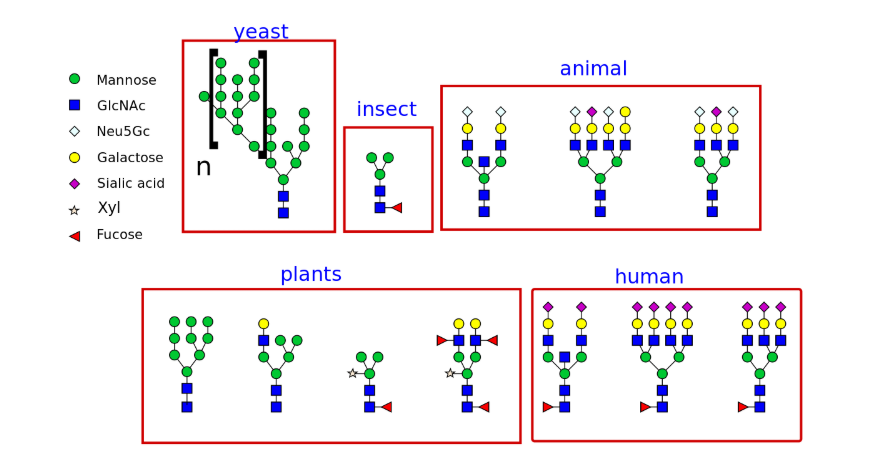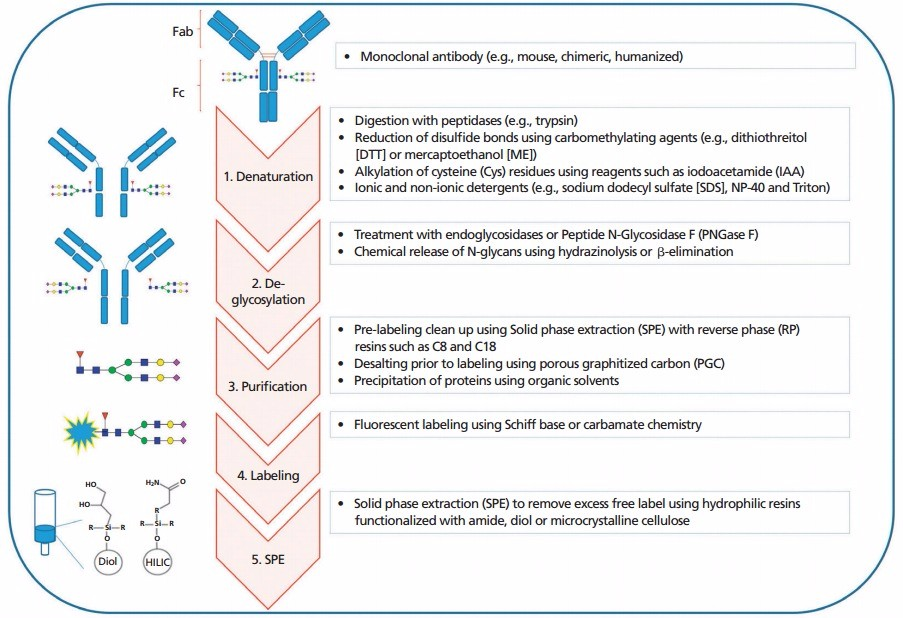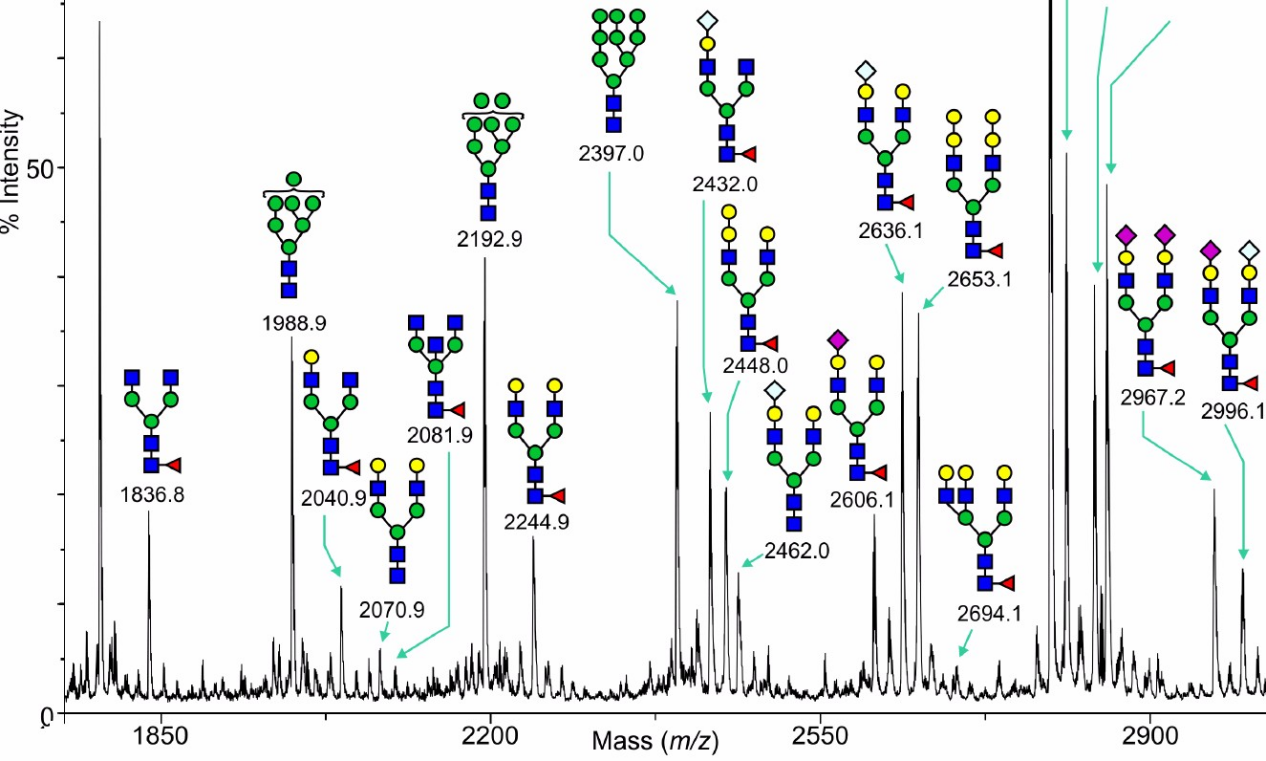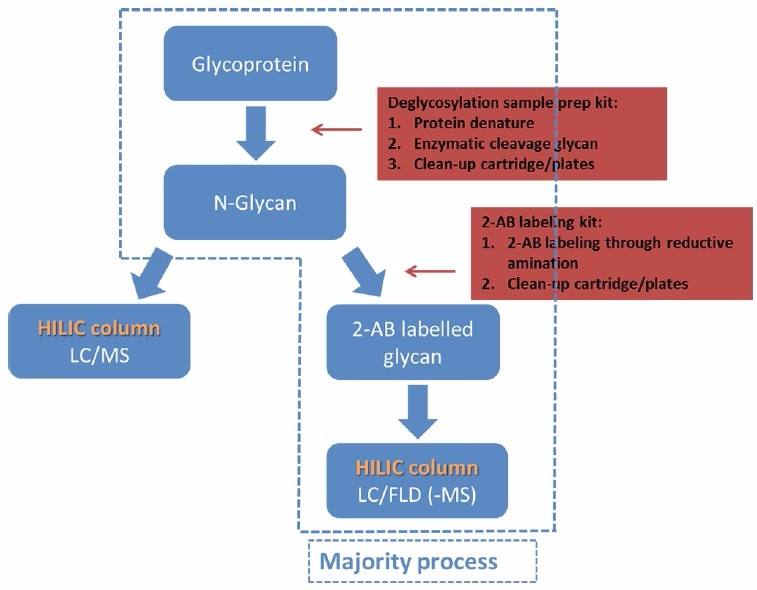N-glycan Analysis Service
Glycosylation mainly refers to the enzymatic process of attaching glycans to proteins, lipids, or other organic molecules. It is the most common post-translational modification (PTM) of proteins. Due to the complexity and isomeric nature of attached glycans, glycosylation analysis is very challenging. With the increasing application of protein therapeutics in clinical practice, such as monoclonal antibodies, glycoproteins, hormones, cytokines, and coagulation factors, the detection of protein N-glycosylation (also known as N-glycans, N-glycan) has received increasing attention.

Different types of N-glycans produced in different organisms
N-Glycan (N-Glycan) is an oligosaccharide structure containing Man3-GlcNAc2. They are linked to the polypeptide chain of proteins through a glycosidic bond between the terminal N-acetylglucosamine (GlcNAc) and the NH2 group of asparagine. Most glycan analysis sample preparation steps include digestion, deglycosylation, purification, labeling/derivatization, and SPE of glycoproteins. Depending on the characteristics of the sample, other steps and techniques may also be used for sample preparation.

General process of N-glycan analysis (using antibodies as an example)
MALDI TOF MS and/or UHPLC technology can be used to analyze glycans and their types.
N-glycan analysis based on MALDI-TOF MS technology
MALDI-TOF has high sensitivity for structural characterization of glycosylated compounds and can achieve high-throughput detection. When analyzing mixed N-glycans, MALDI analyzes the sample through the formation of singly charged ions instead of using electrospray ionization. After releasing the N-glycans from the sample using enzymatic reactions with N-glycosidase A or F, the sample is methylated for detection.

N-glycan analysis based on mass spectrometry
N-glycan profiling analysis based on HILIC-UHPLC MS technology
N-glycan analysis based on LC-MS is currently the mainstream analysis method. Hydrophilic interaction chromatography (HILIC) can be used for N-glycan analysis. N-glycans released by PNGase F enzymatic reaction are derivatized with 2-aminobenzamide (2-AB) for analysis of the derivatized glycans, which can be used for the analysis of a large number of N-glycans. Before fluorescence labeling, if there are large amounts of detergents, non-volatile salts, or substances with free amino groups that may interfere with the derivatization reaction, the N-glycans can be purified using a TSK Amide-80 column. Labeled N-glycans are analyzed using HILIC-UHPLC MS.

Routine process for N-glycan analysis using HILIC columns
BioTechPack has many years of experience in providing analysis services in the field of glycomics and can tailor glycomics analysis services according to your specific needs. Welcome to inquire!
Chinese/English project report
In the technical report, BioTechPack will provide you with a detailed bilingual (Chinese and English) technical report, including:
1. Experimental steps (in Chinese and English)
2. Relevant mass spectrometry parameters (in Chinese and English)
3. Mass spectrometry images
4. Raw data
5. N-glycan analysis results
One-stop N-glycan analysis service
You only need to place an order and send samples
BioTechPack one-stop service completes: sample processing, on-machine analysis, data analysis, project report
Related services
Glycoprotein analysis
Glycoform analysis
Glycosylation site analysis
Glycosylation site and glycoform analysis at the site
O-glycan analysis
N-glycan modification and modification site analysis service
How to order?





